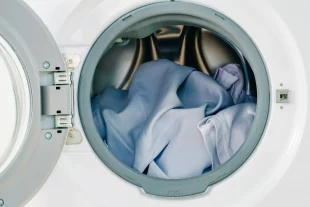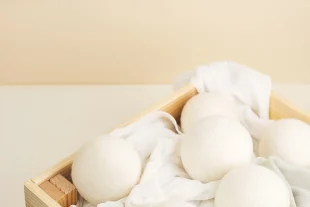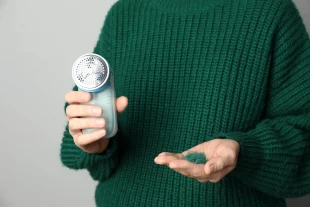 Get How-To's
Get How-To's
How to Wash Silk
🗽Break free from hidden pricing. Discover transparency in our Savings Calculator!
Read tips, tricks, and how-to’s on our Fabric of Life blog.🎆
Garment Guides

Caring for your delicate garments requires special attention in order to maintain their quality and extend their lifespan. With proper care, you can ensure your favorite silk blouse, cashmere sweater, or wool coat doesn’t get damaged during washing and stays beautiful for years. In today’s guide, we will share with you all the best practices for washing, drying, and protecting these delicate garments so they always look their best.
Proper care for your delicate begins with the washing phase, where the right steps and precautions are essential to avoid damage. By taking the time to understand these vital measures, you can protect your delicate items and keep them in excellent condition. When washing your delicate clothing, consider the following advice and steps:
The care label is the cheat sheet for washing your delicate garments. It is important to read these tags before washing as they provide specific care guidelines, helping you understand how to handle each piece and its uniqueness. When reviewing the care label look for symbols such as:
For more details on laundry symbols, visit this guide on laundry symbols. Ignoring care labels can lead to irreversible damage, so always double-check before washing.
Next, it’s time to sort and prepare your delicates for the washing machine. Separate your items by color and fabric type, ensuring delicates are together and whites and colors are sorted. This avoids color bleeding or discoloration mishaps. For an added level of protection, you can use a mesh laundry bag. These bags shield delicate fabrics from the rough drum of the washing machine.
When it comes to which detergent to use, always opt for gentle liquid detergents. Harsh chemicals can weaken the fibers of your favorite garments, leading them to break down faster. Mild formulas on the other hand gently clean your delicate clothing without running the risk of causing harm.
For more tips on sorting your laundry, check out this separating laundry and sorting clothes resource.
There are certain times when hand washing is more appropriate than machine washing. There are also times when the opposite reins true. So, how do you choose which to choose for your delicate clothing?
First, we start by reading the care label. These labels often state if machine washing is okay or if the garment should only undergo a handwash. If the label does not specify or the label is missing, you can follow these basic guidelines for washing delicate clothing items:
Handwashing is ideal for delicate items like silk, lace, or cashmere. If you’re uncertain whether your garment is too fragile for a gentle wash cycle, it’s perfectly fine to choose the handwashing method as a precaution. Here is a brief handwashing guide:
If your garment has a label and does not state you should “handwash only”, you can use a gentle machine wash setting. However, it is still important to take certain precautions. Here is a brief guide to machine washing your delicate:
Regardless of the method chosen, proper care and attention can prevent issues like shrinking, stretching, or fraying, preserving your favorite delicate items for years to come. Next: dry your delicate items safely, because it doesn’t stop at the wash.
Proper care for your delicate items extends past the washing phase. It is important to follow a set of guidelines when drying these garments to ensure they do not get harmed in the process. Here we have broken down some best practices for safely drying your delicate items:
Some items can withstand a dryers spin cycle at low speed, but the most delicate fabrics are better suited to air drying. Materials like silk and wool are particularly fragile, and high-speed spins can place unnecessary stress on their fibers, potentially causing damage over time. To preserve their integrity, always avoid using high heat or extended drying settings, as these can cause irreversible harm.
Hang drying is ideal for allowing natural air circulation. This is particularly beneficial for delicate items like silk dresses and lightweight blouses. To ensure these garments maintain their shape and avoid stretching, it’s important to use padded hangers as they prevent stretching.
For heavier pieces, such as cashmere sweaters, a different approach is recommended. In this case, it’s best to lay them flat to preserve their structure. Simply place the sweater on a clean, dry towel or a mesh drying rack, which facilitates drying while helping to maintain its original shape.
In addition to avoiding high heat fast cycles, you should never wring out delicate fabrics, as this action can stretch, weaken, or distort their structure. Proper care ensures these materials retain their softness, shape, and longevity, even with frequent use or washing.
Your delicate items are washed, they are dried, and now it is time to focus on the in-between care. Let’s talk folding vs. hanging, long-term care, how to spot clean, and where to go when you need professional care for your garments:
Deciding whether to fold or hang delicate garments is vital in preserving their quality. Fold heavier items like cashmere sweaters to prevent unwanted stretching. For silk dresses and lightweight fabrics, choose padded hangers to help maintain their shape and structure while reducing creases and preserving their elegant appearance.
Proper storage is important for maintaining the shape and quality of your delicate garments. For starters, be sure to store these items in a cool, dry space and away from direct sunlight. Sunlight can cause fading and weaken fabric fibers. For your extra special pieces, consider a protective cover to shield them from dust and other outside elements.
Accidents can occur at any time, but efficient spot cleaning can save your garments. When dealing with stains, use a gentle detergent mixed with cold water. Gently dab the stained area instead of rubbing, as this can spread the stain or harm the fabric fibers.
If a stubborn stain doesn’t come out after your initial attempts, it may be best to seek professional cleaning services. These services use specialized cleaning solutions that can ensure you get the best results. If caught in a timely fashion, professional dry cleaners can lift stains and avoid leaving behind permanent damage.
When it comes to delicate fabrics and garments, sometimes professional care is the best option. CD One Price Cleaners specializes in handling materials like silk, wool, and cashmere with safe, non-damaging techniques. You can save time and stress by leaving your laundry with us—simply drop it off, let us work our magic, and pick it up washed & folded.
Let us help you care for your most delicate items. Visit CD One Price Cleaners today!
We think you may like
 Get How-To's
Get How-To's
How to Wash Silk
 Get Garment Guides
Get Garment Guides
How to Use Wool Dryer Balls
 Get Garment Guides
Get Garment Guides
Fabric Pilling Guide